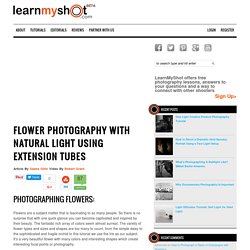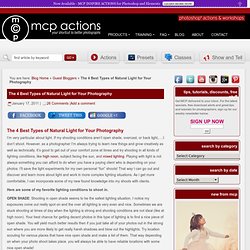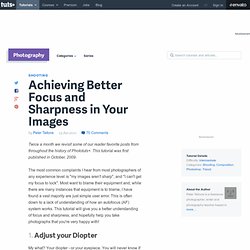

Hobo DIY Softbox for Perfect Portraits » Riaz Missaghi. Holy Crap Kevin Rose of Dugg Digg, dugg this article, thanks for the heads up Amir I owe you a latte, unless i ever manage to beat you in Desktop Tower Defense I spent about a grand on my camera equipment (body, lenses) and forgot to save anything for the lighting equipment, doh!

A camera is only as good as the light that comes into it, cameras capture light and make a mess when they try to amplify the dark. When I made the move from a point-and-shoot to a SLR I figured I’d get a 50mm lens because it was the cheapest lens that opened up to f/1.8, and i wanted to be able to take pictures in the living room (of my kids) without a flash. Jump to 6 months later I realize that the light in my living room is hit or miss and at f/1.8 the plane of focus is so thin that I’d have to immobilize the kids to put that plane in the right place. SolutionCardboard box, tin foil, tape, knife, wireless flash kit, Macro Photography: How to Photograph Using Close Up Tubes. Watch this photography tutorial video to learn how to use close up extension tubes.

Wish you could take gorgeous photos? Now you can! Flower Photography with Natural Light using Extension Tubes. Flowers are a subject matter that is fascinating to so many people.

So there is no surprise that with one quick glance you can become captivated and inspired by their beauty. The fantastic rich array of colors seem almost surreal. The variety of flower types and sizes and shapes are too many to count, from the simple daisy to the sophisticated and fragile orchid.In this tutorial we use the Iris as our subject. It’s a very beautiful flower with many colors and interesting shapes which create interesting focal points or photography.
Understanding Camera Autofocus. A camera's autofocus system intelligently adjusts the camera lens to obtain focus on the subject, and can mean the difference between a sharp photo and a missed opportunity.

Despite a seemingly simple goal—sharpness at the focus point—the inner workings of how a camera focuses are unfortunately not as straightforward. This tutorial aims to improve your photos by introducing how autofocus works—thereby enabling you to both make the most of its assets and avoid its shortcomings. Note: Autofocus (AF) works either by using contrast sensors within the camera (passive AF) or by emitting a signal to illuminate or estimate distance to the subject (active AF). Passive AF can be performed using either the contrast detection or phase detection methods, but both rely on contrast for achieving accurate autofocus; they will therefore be treated as being qualitatively similar for the purposes of this AF tutorial.
Unless otherwise stated, this tutorial will assume passive autofocus. 6 Tips for Better Portraits. How to improve my photography skills. Mike Browne / Bite-size Photography Videos (very helpful!) Photography Infographics. Long Exposure Photography Tips. Photographing the Ferris Wheel To photograph a Ferris wheel at night, move close and use a wide-angle lens to get as much detail as possible.

Place your camera on a tripod and frame the image. Because we want all the elements to be sharp, choose a small aperture between f/11-f/32. Learn How ISO Sensitivity Works. ISO Sensitivity ISO is actually an acronym, which stands for International Standards Organization, and the ISO rating along with the shutter speed and aperture setting are the three elements that determine the final exposure of the photographic image.

The ISO rating, which ranges in value from 25 to 6400 (or beyond), indicates the specific light sensitivity. MCP Photoshop Actions and Tutorials Blog for Photographers. You are here: Blog Home » Guest Bloggers » The 4 Best Types of Natural Light for Your Photography The 4 Best Types of Natural Light for Your Photography I’m very particular about light.

If my shooting conditions aren’t open shade, overcast, or back light,….I don’t shoot. However, as a photographer I’m always trying to learn new things and grow creatively as well as technically. It’s good to get out of your comfort zone at times and try shooting in all kinds of lighting conditions, like high noon, subject facing the sun, and mixed lighting. Achieving Better Focus and Sharpness in Your Images. Twice a month we revisit some of our reader favorite posts from throughout the history of Phototuts+.

This tutorial was first published in October, 2009. The most common complaints I hear from most photographers of any experience level is "my images aren't sharp", and "I can't get my focus to lock". Most want to blame their equipment and, while there are many instances that equipment is to blame, I have found a vast majority are just simple user error. This is often down to a lack of understanding of how an autofocus (AF) system works. This tutorial will give you a better understanding of focus and sharpness, and hopefully help you take photographs that you're very happy with!
1. My what? You can adjust the eyepiece to a fairly large degree, but if you need more eyesight correction, there are replacement diopters available for DSLR/SLR's from many of the major manufacturers in a range from -5 to +4 as needed. 2. What the heck are all those things in there anyway? 3. 4. Internet Brothers: Digital Photography Tips and Tutorials. What this is about: Film-less photographs, pictures on a chip, scanned memories, call it what you will, digital photography is a phenomenon of technology that allows for instant gratification.

The Internet Brothers have been dabbling in digital imagery for years now, so we'll share some of what we've learned with you. We explain the differences between digital and traditional film photography, help you decide how to choose your new camera, share information about digital SLR and sensors, and offer tips for creating 360° panoramic effects. Just for good measure, we have some suggestions for storing your digital imagery for posterity. Understanding Exposure - ISO, Aperture and Shutter Speed Explained. What controls exposure?

ISO ratings determine the image sensor’s sensitivity to light, each value of the rating represents a “stop” of light, and each incremental ISO number (up or down) represents a doubling or halving of the sensor’s sensitivity to light. The Aperture controls the lens’ diaphragm, which controls the amount of light traveling through the lens to the film plane. Understanding White Balance in Digital Photography. Color Temperature. Aperture and Depth of Field. Depth of Field Depth of Field (DOF) is the front-to-back zone of a photograph in which the image is razor sharp. As soon as an object (person, thing) falls out of this range, it begins to lose focus at an accelerating degree the farther out of the zone it falls; e.g. closer to the lens or deeper into the background. With any DOF zone, there is a Point of Optimum focus in which the object is most sharp.
Photography Tips - DCViews.